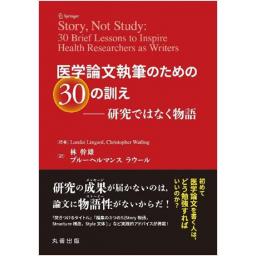1) Strong, M. J., Busing, N., Goosney, D., Harris, K., Horsley, T., Kuzyk, A., et al. (2018). The rising challenge of training physician-scientists : Recommendations from a Canadian national consensus conference. Academic Medicine, 93 (2), 172-178. https://doi.org/10.1097/ACM.0000000000001857.
2) Tolsgaard, M. G., Kulasegaram, K. M., Woods, N., Brydges, R., Ringsted, C., & Dyre, L. (2020). The myth of ivory tower versus practice-oriented research : A systematic review of randomised studies in medical education. Medical Education. https://doi.org/10.1111/medu.14373.
3) Panagioti, M., Geraghty, K., Johnson, J., Zhou, A., Panagopoulou, E., Chew-Graham, C., et al. (2018). Association between physician burnout and patient safety, professionalism, and patient satisfaction : A systematic review and meta-analysis. JAMA Internal Medicine, 178 (10), 1317-1331. https://doi.org/10.1001/jamainternmed.2018.3713.
4) Colenbrander, L., Causer, L., & Haire, B. (2020). 'If you can't make it, you're not tough enough to do medicine' : A qualitative study of Sydney-based medical students' experiences of bullying and harassment in clinical settings. BMC Medical Education, 20. https://doi.org/10.1186/s12909-020-02001-y.
5) Hodges, B. D. (2010). A tea-steeping or i-Doc model for medical education? Academic Medicine, 85 (9), S34-S44. https://doi.org/10.1097/ACM.0b013e3181f12f32.
6) Sword, H. (2012). Stylish academic writing. Cambridge, MA : Harvard University Press.
7) Lu, D. W., Lall, M. D., Mitzman, J., Heron, S., Pierce, A., Hartman, N. D., et al. (2020). #MeToo in EM : A multicenter survey of academic emergency medicine faculty on their experiences with gender discrimination and sexual harassment. The Western Journal of Emergency Medicine, 21 (2), 252-260. https://doi.org/10.5811/westjem.2019.11.44592.
8) Spafford, M. M., Schryer, C. F., Mian, M., & Lingard, L. (2006). Look who's talking : Teaching and learning using the genre of medical case presentations. Journal of Business and Technical Communication, 20 (2), 121-158. https://doi.org/10.1177/1050651905284396.
9) Gornitzki, C., Larsson, A., & Fadeel, B. (2015). Freewheelin' scientists : Citing Bob Dylan in the biomedical literature. BMJ, 351. https://doi.org/10.1136/bmj.h6505.
10) Watling, C. J., Kenyon, C. F., Schulz, V., Goldszmidt, M. A., Zibrowski, E., & Lingard, L. (2010). An exploration of faculty perspectives on the in-training evaluation of residents. Academic Medicine, 85 (7), 1157-1162. https://doi.org/10.1097/ACM.0b013e3181e19722.
11) Brabazon, T. (2020, September 11). Vlog 234 : Titles [Video]. Youtube. https://www.youtube.com/watch?v1/41aw8GkKCbpU&t1/4
12) Tyler, P. D., Fossa, A., Joseph, J. W., et al. (2020). Later emergency provider shift hour is associated with increased risk of admission : A retrospective cohort study. BMJ Quality & Safety, 29, 465-471. https://doi.org/10.1136/bmjqs-2019-009546.
13) Manges, K., Groves, P. S., Farag, A., Peterson, R., Harton, J., & Greysen, S. R. (2020). A mixed methods study examining teamwork shared mental models of interprofessional teams during hospital discharge. BMJ Quality & Safety, 29, 499-508. https://doi.org/10.1136/bmjqs-2019- 009716.
14) Ginsburg, S., Eva, K., & Regehr, G. (2013). Do in-training evaluation reports deserve their bad reputations? A study of the reliability and predictive ability of ITER scores and narrative comments. Academic Medicine, 88 (10), 1539-1544. https://doi.org/10.1097/ACM.0b013e3182a36c3d.
15) Hartley, J. (2007). There's more to the title than meets the eye : Exploring the possibilities. Journal of Technical Writing and Communication, 37 (1), 95-101.
16) Moniz, T., Lingard, L., & Watling, C. (2017). Stories doctors tell. JAMA, 318 (2), 124-125. https://doi.org/10.1001/jama.2017.5518.
17) Espin, S., & Lingard, L. (2001). Time as a catalyst for tension in nurse-surgeon communication. AORN Journal, 74 (5), 672-682. https://doi.org/10.1016/S0001-2092(06)61766-3.
18) Watling, C. J., & Ginsburg, S. (2019). Assessment, feedback and the alchemy of learning. Medical Education, 53 (1), 76-85. https://doi.org/10.1111/medu.13645.
19) Norman, G. (2003). RCT=results confounded and trivial : The perils of grand educational experiments. Medical Education, 37 (7), 582-584. https://doi.org/10.1046/j.1365-2923.2003.01586.x.
20) Sagi, I., & Yechiam, E. (2008). Amusing titles in scientific journals and article citation. Journal of Information Science, 34 (5), 680-687. https://doi.org/10.1177/0165551507086261.
21) Eva, K. (2005). What every teacher needs to know about clinical reasoning. Medical Education, 39 (1), 98-106. https://doi.org/10.1111/j.1365-2929.2004.01972.x.
22) Editorial Board. Instructions for authors. Perspectives on Medical Education. http://www.springer.com/education+%26+language/journal/40037. Accessed 9 Mar 2016.
